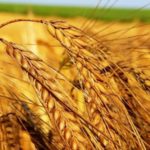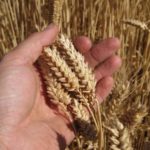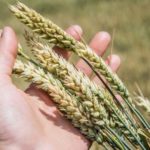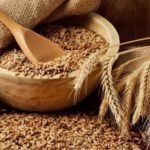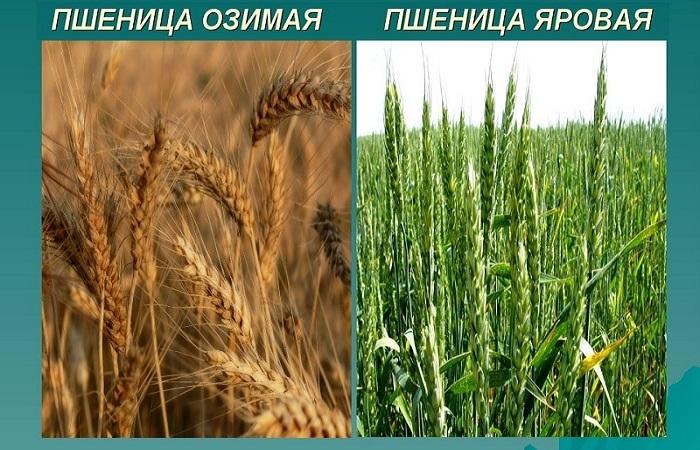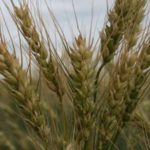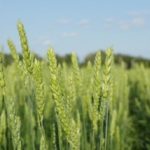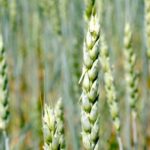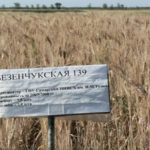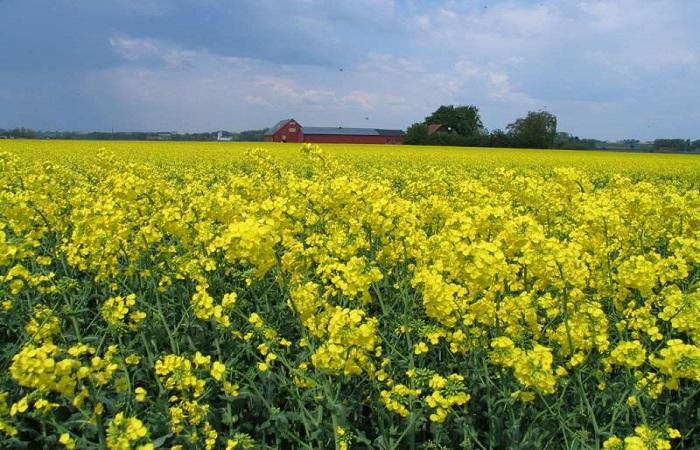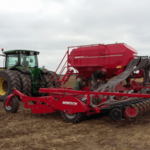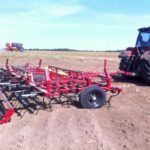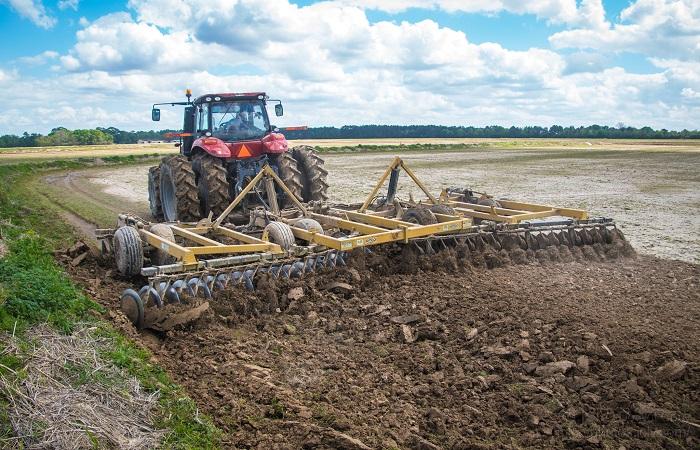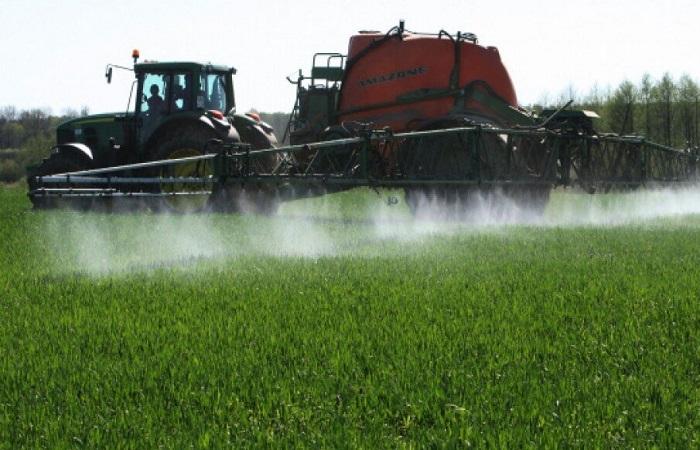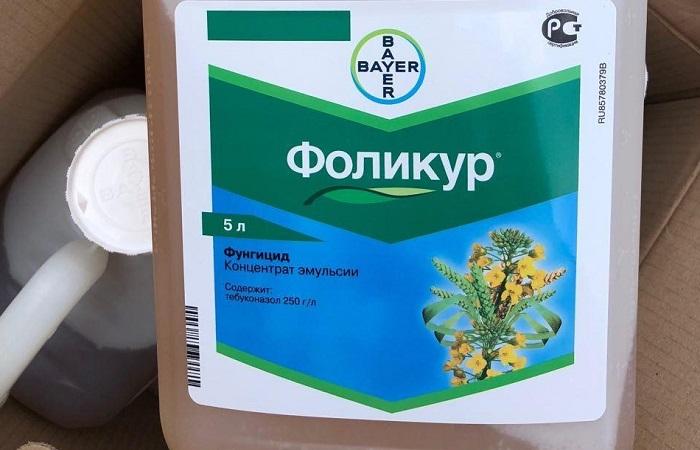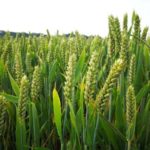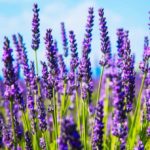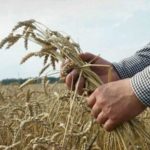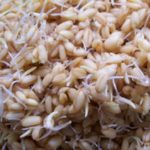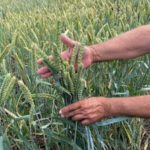Spring wheat varieties are considered to be in great demand. They have many advantages and minimal disadvantages. This annual or biennial crop is often used as an insurance crop for overseeding or reseeding winter wheat. Today, many varieties of spring wheat have been developed that are characterized by high yields. For their cultivation to be successful, it is necessary to adhere to the key rules of agricultural technology.
- Description of spring wheat
- Productivity
- Advantages and disadvantages
- Differences from winter
- Varieties and types
- Soft
- Solid
- Growing rules
- Predecessors
- Soil and seed preparation
- Landing
- Further care
- Rolling and harrowing
- Fertilizers
- Watering
- Weed control
- Weed, disease and pest control
- Possible problems
- Cleaning and storage
Description of spring wheat
Spring wheat is a herbaceous plant that belongs to the Poa family and has special botanical characteristics. The plant's root system develops throughout the growing season. By the time of flowering, it can reach up to 1.5-2 meters in length. The stems can grow from 30 centimeters to 1.5 meters. The crop is characterized by good bushiness. 1 plant can contain up to 10 stems.
Spring wheat has rather narrow leaves, the width of which usually does not exceed 2 centimeters. They are characterized by a flat shape, parallel veins and many fibers. The foliage also has a rough surface.
The inflorescence is a complex straight spike, the length of which is 4-15 centimeters. Depending on the variety and type, it can be ovoid or elongated. On the axis of each ear there are scales up to 1.5 centimeters in size.
Spring wheat has single ears, which are adjacent to the axis in two identical rows. Their length reaches 2 centimeters. The structure also includes several closely spaced flowers - about 4-5. You can determine the variety of wheat by the grain. It comes in a reddish, beige or yellow hue.
For crop cultivation to be successful, it is important to strictly follow agrotechnical rules. In this case, it is necessary to pay attention to the choice of plant treatment scheme.
Productivity
Specific yield parameters depend on the variety and growing conditions. Modern types of spring wheat are capable of producing more than 30-50 centners of grains per hectare.
Advantages and disadvantages
The key benefits of the plant include the following:
- Temperature tolerance. The plant perfectly withstands short frosts, prolonged heat and frequent dry winds.Moderate temperature fluctuations do not cause much harm to the cereal.
- Sustainability. Spring wheat is characterized by a high degree of resistance to diseases and pests. A special advantage of the culture is its innate immunity to fusarium.
- No tendency to shedding. By the time of harvest, the crop retains almost its entire yield, even in strong winds.
- Productivity. Spring varieties are characterized by excellent productivity. They produce high quality grain.
At the same time, spring wheat also has some disadvantages. These include the following:
- Weak initial stage. In the first 2 weeks of the growing season, the plant is most susceptible to the influence of negative factors. This primarily applies to roots and productive bushiness.
- Susceptibility to weeds. Despite the high resistance to diseases and parasites, it will not be possible to cope with weeds without the use of special means.
- Demanding requirements for agricultural technology. It takes a lot of effort to get the maximum harvest. This largely concerns moisture levels and fertilization.
Differences from winter
Spring and winter wheat have many differences. They include the growing season, requirements for soil composition, planting dates and yield parameters. This helps each farmer choose the most suitable option.
Winter wheat should be planted from late summer to mid-October. If you do this very early, the plantings will become too dense.As a result, the plant will lose resistance to drought and parasites. However, you shouldn’t delay planting either. In this case, the plants will not have time to grow greenery. As a result, productivity falls and stress resistance decreases.
Varieties and types
This type of wheat can be soft or hard. Thanks to breeding achievements, there are many varieties of such crops, and this number is increasing all the time.
Soft
This variety of wheat has thin and hollow stems. It is characterized by mealy, semi-vitreous or glassy grains. This type of plant is best grown in areas with consistently high air humidity, as the crop has difficulty withstanding drought. At the same time, soft wheat has lower requirements for soil fertility and does not suffer as much from weeds.
The most popular varieties of soft wheat include:
- Daria - characterized by a short growing season and high yield. The plant resists powdery mildew well and has no tendency to lodging. In this case, the variety may suffer from brown rust.
- Irgina is an early ripening variety that is often grown in the southern regions of Russia. It is characterized by high productivity. The culture is resistant to lodging.
- Lada is an early ripening variety that is characterized by high yield. It is characterized by resistance to powdery mildew.
Solid
These varieties of wheat are distinguished by thick stems and small, hard grains. Plants develop well in continental climates, which are characterized by short, hot and dry summers. Durum wheat can withstand dry weather and hot winds much better.
The most popular varieties of durum wheat include:
- Orenburgskaya 10 is an excellent option for beginners.It is characterized by average resistance to drought, shedding and lodging.
- Bezenchukskaya steppe - characterized by an average ripening period and resistance to lodging. At the same time, the plant is very resistant to drought and allows you to obtain high-quality flour.
- Kharkovskaya 39 – allows you to obtain high quality flour. The plant is characterized by amber grains of high glassiness. The plant is characterized by average resistance to smut, powdery mildew, and Swedish fly. At the same time, it practically does not suffer from brown rust or loose smut.
Growing rules
In order for spring wheat to produce a good harvest, it is worth adhering to certain recommendations for growing this crop.
Predecessors
When planting a plant, it is important to follow the rules of crop rotation. It is worth considering the following:
- The best predecessors are legumes, winter wheat, rapeseed, and perennial grasses.
- If barley grew in the field before, it is better to choose another place. Otherwise, there is a risk of reduced yield and reduced gluten content in the fruit.
- Re-sowing spring wheat should be avoided. Otherwise, the risk of developing root rot increases by 50%.
Soil and seed preparation
Soil preparation begins with choosing the optimal composition. Wheat grows best in the Black Earth Region. With strict adherence to the rules of agricultural technology, the harvest can be obtained from gray forest and sod-podzolic soil. At the same stage, fertilizing is required.
When cultivating the soil, the following must be taken into account:
- For virgin and fallow lands, moldboard plowing is carried out using a plow with skimmers. In this case, the processing depth should be 20-25 centimeters.
- On saline and light chestnut soils, plowing to a depth of 10-15 centimeters is effective.
- If there is a large surface layer of turf, preliminary disking is carried out before arable work.
Compliance with the rules for preparing seed material is of no small importance. It is recommended to do the following:
- Disinfect grains. This will help get rid of pathogens that are present on the surface and inside the seeds. The procedure also protects planting material from diseases and pests that are present in the soil. The most effective remedies include Benomil, Tebuconazole, and Flutriafol.
- Warm up the seeds. To do this, they need to be placed in the sun for 3-4 days.
Landing
The sowing dates and technology for cultivating this type of wheat are determined by the conditions of the region. The optimal planting method is narrow row. It increases the seeding rate, but at the same time increases the yield parameters by 2-3 centners.
It is also permissible to use tape and row methods. The cross method is almost never used, since it does not meet the agrotechnical requirements for growing this wheat.
Further care
In order for spring wheat to produce a good harvest, it is important to provide it with proper care. It should include a number of elements.
Rolling and harrowing
Soil rolling is recommended in arid regions. For this, various rollers are used.They help level the field and crush lumps. If after precipitation a crust has formed on the surface of the earth, it is worth harrowing the earth.
Fertilizers
Fertilizing has a beneficial effect on the germination of wheat, helps to form powerful plants and strengthen their immunity. This type of crop requires root application of potassium and phosphorus. Foliar nitrogen fertilizing makes grains of higher quality, increasing the protein content in their composition. To activate the growth of the crop, it is worth adding boron, zinc, copper, manganese, and molybdenum.
Liquid fertilizers based on potassium and nitrogen cannot be used for spring wheat. They increase the concentration of minerals in the soil and make the emergence of seedlings less friendly.
Watering
The irrigation rate is determined by the physical characteristics of the soil and the required depth of moisture. However, on average, this type of wheat requires 600-800 cubic meters of water per 1 hectare. The plant experiences a special need for moisture at the following stages:
- the appearance of shoots;
- tubing;
- beginning of flowering;
- before forming and filling the grains.
Weed control
An important stage in wheat care is the control of weeds, which negatively affect its yield. Herbicides should be selected depending on the composition of the grass, its abundance and climate characteristics. For this purpose, you can use Hurricane and Roundup.
Weed, disease and pest control
When growing spring wheat, it is worth taking into account the biological characteristics of the plant. The most dangerous diseases are fusarium and septoria. To combat them, you can use different fungicides - “Folikur”, “Albit”, “Tilt”.
Possible problems
Possible problems when growing crops include diseases and pests. The most dangerous diseases are septoria, snow mold, and powdery mildew. Albit, Fitolavin, and Karbezim will help you cope with them.
Among the parasites, spring wheat suffers from bread beetles, harmful turtles, and thrips. “Decis” and “Sumi-alpha” help to destroy pests.
Cleaning and storage
Grain is harvested depending on its ripeness. The timing in the Kemerovo region and in the south of Russia is different. If wheat is grown in the east of the steppe zone and in the west, some features need to be taken into account. Grain can be collected by direct combining or by separate method. After this, it needs to be cleaned and dried.
In order for the cultivation of spring wheat to be successful, it is important to strictly adhere to the rules of agricultural technology. The culture is distinguished by its demands on soil composition and climate.


